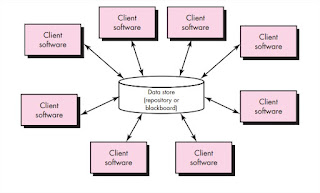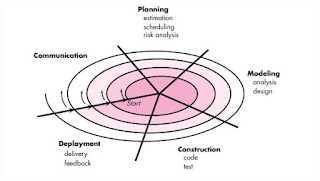Component-Level Design for Traditional Software Component
A component is a modular building
block for computer software. More formally, the OMG Unified Modeling Language
Specification defines a component as “. . . a modular, deployable, and
replaceable part of a system that encapsulates implementation and exposes a set
of interfaces.”
A traditional component, also
called a module, resides within the software architecture.
Three Roles
(1)
a control component that coordinates the invocation of all other problem domain
components
(2)
a problem domain component that implements a complete or partial function that
is required by the customer
(3) an infrastructure component
that is responsible for functions that support the processing required in the
problem domain.
traditional software components
are derived from the analysis model.
Control components (modules)
reside near the top of the hierarchy, and problem domain components tend to
reside toward the bottom of the hierarchy.
A set of data flow diagrams would
be derived during requirements modeling. Assume that these are mapped into architecture.
Each box represents a software
component.
Structure chart for a traditional system
The module interface is defined
explicitly. That is, each data or control object that flows across the
interface is represented.
The data structures that are used
internal to the module are defined. The algorithm that allows the module to
accomplish its intended function is designed using the step wise refinement
approach.
The behavior of the module is
sometimes represented using a state diagram.
consider the module
ComputePageCost. The intent of this module is to compute the printing cost per
page based on specifications provided by the customer. Data required to perform
this function are: number of pages in the document, total number of documents
to be produced, one- or two-side printing, color requirements, and size
requirements.
These data are passed to
ComputePageCost via the module’s interface.





